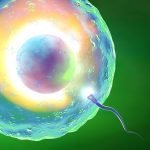Treatment Considerations for Unexplained Male and Female Infertility
Amy Johnson-Grass, ND, LN, LM, CPM
Unexplained infertility is a diagnosis of exclusion, when the standard investigation of both female and male partner has ruled out other infertility diagnoses (American Society for Reproductive Medicine). It doesn’t mean there is no reason for the infertility, but the reason is unable to be identified at that time. Approximately 10% to 15% of couples will receive the diagnosis of unexplained infertility (American Society for Reproductive Medicine). It is disappointing for a couple who has been trying to conceive for more than a year to hear the diagnosis of “unexplained infertility,” and they often find themselves seeking alternative treatments in the hopes of conceiving. The following are treatment recommendations to consider when working with unexplained male and female infertility patients.
Assess Function
Make sure a proper fertility assessment has been performed when starting to work with a couple. The conventional infertility evaluation in the female may include medical history, physical examination, tests of blood hormone levels, ovulatory function (basal body temperature or home ovulation kits), hysterosalpingogram, and laparoscopy. The conventional infertility evaluation in the male may include medical history, physical examination, semen analysis, and hormonal testing. While certain cases of male infertility are due to anatomical abnormalities such as varicoceles, ductal obstructions, or ejaculatory disorders, an estimated 40% to 90% of cases are due to deficient sperm production of unidentifiable origins (Sinclair, 2000).
Additional tests to consider depending on a patient’s history may include zinc taste test, heavy metal analysis, complete digestive stool analysis, food/environmental IgG and IgE testing, thyroid and ovulation status, complete blood count, serum ferritin levels, genitor-urinary tests for infection, pap smear, and dental check-ups.
Don’t Assume
Don’t assume that because a couple has been trying to conceive they have been counseled in the basics. Smoking, tobacco use, caffeine intake, and alcohol use can all have negative effects on a couple’s fertility. Educate patients on the mechanism of how each affects their combined fertility and encourage changing rituals and habits to healthier alternatives.
Body Composition
Body weight, and its constituent components of fat mass and lean tissue, plays an important role modulating reproductive development and functioning (Davies, 2006). Extremes in body weight are associated with infertility and a range of adverse outcomes for both mother and baby across the course of pregnancy and perinatal period (Davies, 2006). To help both partners achieve optimal body composition, discuss the importance of meal patterning and adequate protein, carbohydrate, and fat intake at each meal. In addition to proper nutrition habits, encourage daily exercise. Help each to act as the other’s accountability partner to support each other with healthy lifestyle changes. If this is not an option, the clinician can provide this role by frequent check-ins with the patient to discuss achievements and difficulties.
Get the Partner Involved
The role of the prospective father requires the same involvement as the prospective mother. This is because the father provides 50% of the contribution to a healthy conception. Often, infertility is the result of a matrix of smaller reproductive health issues in both the male and female. It is not usually all due to one issue in one partner. Frequently in conventional infertility treatments, it is the female who experiences most, if not all, of the treatment procedures. This is why it is important that both prospective parents are equally responsible and involved from the very beginning when approaching fertility from a naturopathic perspective. I have couples complete a comprehensive fertility intake that requires both of them to participate. In addition, consider couples appointments for your infertility patients. This gives each partner the opportunity to see where the other needs support, and shows their health concerns are equally important for optimal fertility.
Detoxification
It is virtually impossible to avoid environmental toxic exposure. When beginning with a couple I often start with a detoxification program to “clean out” and then work to “build-up.” Detoxification requires the channels of elimination or primary emunctories be supported. These include the colon, kidney, lung, and skin. Naturopathic physicians often add the liver to this list because of its vital function in eliminating toxins from the blood. These channels remove the normal waste of the human body, but can become overwhelmed with stress and poor diet, and modern chemical and toxin exposure. When they become overloaded, the body attempts to adapt to this high toxin load by processing through secondary emunctories, resulting in a variety of symptoms that may include infertility. Remember, as part of your fertility intake make sure to assess for environmental and occupational exposure for heavy metals and their possible role in a couple’s fertility picture.
Nutritional Building Blocks and Supplementation
Nutritional supplementation may play an important role in optimizing fertility health, leading to improved conception rates, and providing an alternative or complement to conventional fertility therapies. Conception rates may be improved nutritionally by optimizing overall reproductive system health, normalizing menstrual cycles and hormone balance in women, or supporting healthy sperm development in men.
A number of nutritional therapies have been shown to improve sperm counts and sperm motility, including carnitine, arginine, zinc, selenium, and vitamin B12 (Sinclair, 2000). Numerous antioxidants have also proven beneficial in treating male infertility, such as vitamin C, vitamin E, glutathione, and coenzyme Q10 (Sinclair, 2000). For females, folic acid, vitamins E, B6, and B12, iron, magnesium, zinc, and selenium deficiencies have been known to cause infertility that are easily reversible with supplementation (National Infertility Association).
Female Hormonal Assessment
Assessment of hormone levels provides important clinical information about female physiological balance. Using test results, practitioners can identify specific disruptions of hormone metabolism. This helps customize therapies and monitor their effects to optimize hormonal balance, and acts as a guide for a practitioner when making supplementation, lifestyle, and dietary treatment recommendations.
Fertility Awareness
Fertility awareness (or natural family planning) involves monitoring the changes a woman’s body goes through during a menstrual cycle. This information helps identify when the woman ovulates, and can be used to time sexual intercourse to increase a couple’s chances of becoming pregnant. There are several methods used for determining the time of ovulation. For fertility awareness to be most effective, you need to use all these methods in combination (called a combined or symptothermal method), which include calendar (rhythm) method, daily basal body temperature measurements, observing cervical mucous changes, and hormonal monitoring (home ovulations kits). Teaching a couple about fertility awareness empowers them to take charge of their fertility and gain an awareness of how their cycles affect their fertility.
Stress and Fertility
While stress may not be the sole cause of infertility, the effects of stress on the body can often exacerbate fertility problems. Extreme stress can affect hormonal balance, which negatively affects a woman’s fertility. This can lead to a vicious cycle.
Research has shown that the stress associated with fertility treatments can be at a level comparable to the stress associated with serious illness (Domar, 2004). Patients who seek emotional support early in treatment are often better prepared for their experiences and find it significantly less stressful than patients who do not (Domar, 2004). Conquering Infertility: Dr. Alice Domar’s Mind/Body Guide to Enhancing Fertility and Coping with Infertility (Penguin Books, 2004) is one resource available when working with fertility patients.
Address Other Health Concerns
As naturopathic physicians we evaluate the person as a whole. This is no different when working with couples dealing with fertility issues. Assess both partners for other health concerns that may be contributing or causing their infertility, which may include but are not limited to gastrointestinal (celiac, food sensitivities, “leaky gut”), thyroid, and gynecological issues.
References
American Society for Reproductive Medicine: www.asrm.org
Davies MJ: Evidence for effects of weight on reproduction in women, Reprod Biomed Online 12(5):552-61, 2006.
Domar A, Kelly A: Conquering Infertility: Dr. Alice Domar’s Mind/Body Guide to Enhancing Fertility and Coping with Infertility, New York, 2004, Penguin Books.
National Infertility Association: www.resolve.org
Sinclair S: Male infertility: nutritional and environmental consideration, Alt Med Rev 5(1):28-38, 2000.
Westphal LM et al: A nutritional supplement for improving fertility in women: a pilot study, J Rep Med 49(4):289-93, 2004.
 Amy Johnson-Grass, ND, LN, LM, CPM, is a graduate of Bastyr University. She has a family practice in St. Paul, Minnesota, where she specializes in women’s health, midwifery, and pediatrics. Dr. Amy also works at Minneapolis Children’s Hospital in its Pediatric Integrative Medicine Department. In addition to her clinical duties, she is a CAM Clinical Research Fellow at the Minnesota Consortium for CAM Clinical Research where she conducts research in women’s health. For more information visit www.health-foundations.com.
Amy Johnson-Grass, ND, LN, LM, CPM, is a graduate of Bastyr University. She has a family practice in St. Paul, Minnesota, where she specializes in women’s health, midwifery, and pediatrics. Dr. Amy also works at Minneapolis Children’s Hospital in its Pediatric Integrative Medicine Department. In addition to her clinical duties, she is a CAM Clinical Research Fellow at the Minnesota Consortium for CAM Clinical Research where she conducts research in women’s health. For more information visit www.health-foundations.com.










